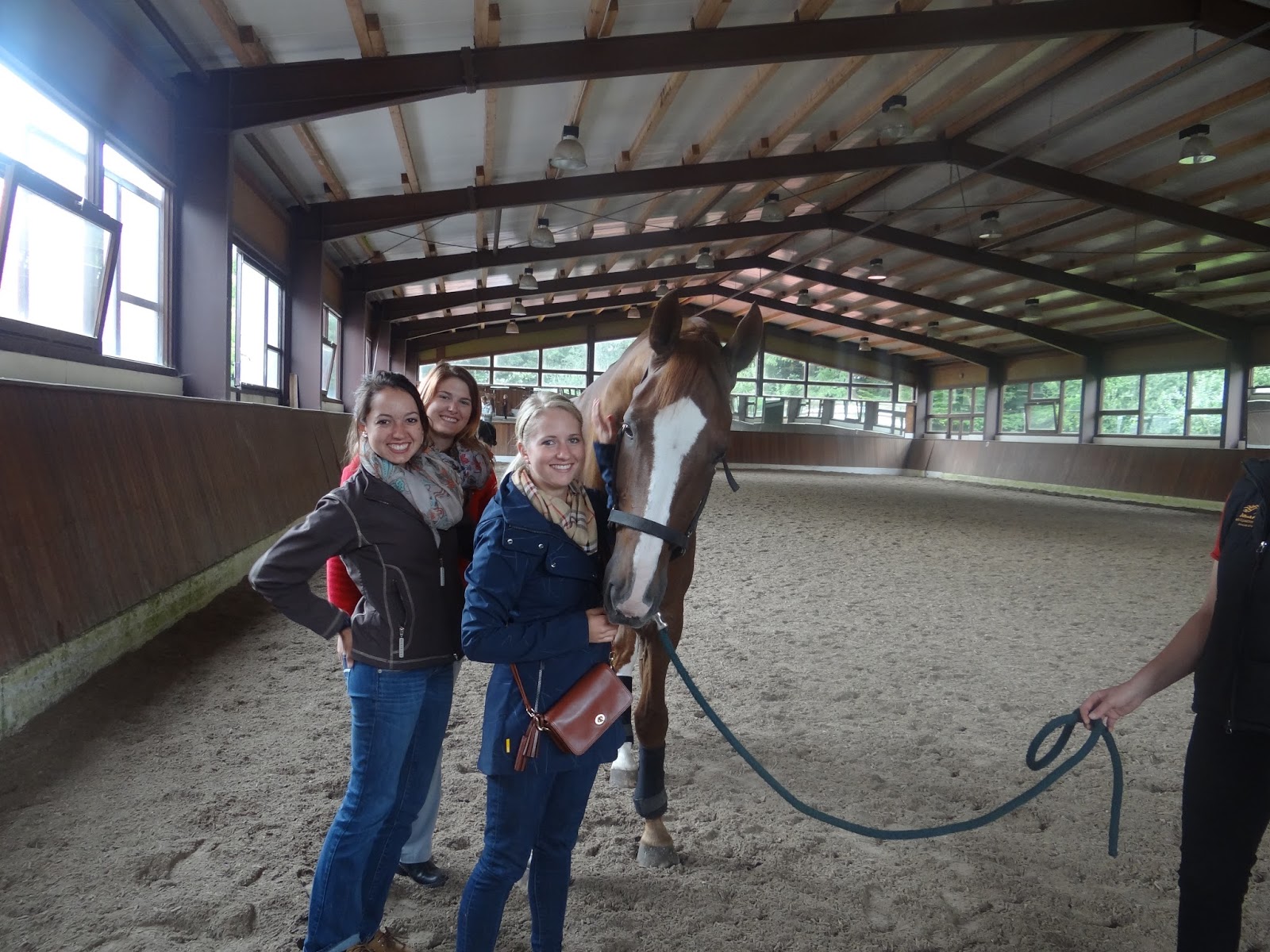Yesterday was our last day in Germany, and we ended the trip
with a fantastic visit at Hubertus Schmidt’s barn. When we arrived at the
stables, we were not only greeted by Hubertus, but also American riders Todd
Flettrich, Devon Kane, and Catherine Malone, who were all there training with
Hubertus. Hubertus did an excellent job explaining his training with us, both
while he was riding and while he was teaching. Here are some of my
observations, along with some of the major points Hubertus discussed with us:
The first point I’d like to note is my own observation on
Hubertus’ riding. Hubertus has an incredible seat with legs that hang loosely
at the horse’s sides and soft hands. He always had a calm look on his face and
he rode in a way that made it look like he was just sitting there and enjoying
the ride. Never did the riding look difficult for him. However, even though
Hubertus appeared very quiet, he was extremely effective with his quiet aids.
The first horse Hubertus rode was a very fancy, 11 year old,
gelding that was schooling the Grand Prix. The gelding was very hot, so the
horse constantly had to be ridden with relaxation as a high priority. The horse
had an incredible passage but would sometimes get too extravagant in it. To
help the horse relax and sink more into the hind legs, Hubertus rode the
passage quieter and slower. As a result, the horse started to passage with
higher steps and with greater ease, because the horse was more relaxed in the
back.
Another horse Hubertus rode for us was an 11 year old trakehner
stallion that was schooling the Grand Prix. The horse was a breeding stallion
until he was seven, so the horse was just starting the Grand Prix. The stallion
came out trotting very normal as Hubertus warmed him up in a stretching frame
with lots of canter-trot transitions to help loosen the horses back. When
Hubertus started collecting the horse, however, the horse became very fancy
with an incredibly long stride. It is amazing to see how a horse can move when
he is relaxed and using his back. Hubertus explained that the entire time you
are riding, you want the feeling that the horse will put his next down if you
were to ask him to stretch. If the horse feels like he wants to crawl up in the
neck, then he hasn’t relaxed over his back.
The third horse Hubertus showed us was very interesting.
When the mare walked into the arena, she didn’t look like much. In fact, I was
surprised to see Hubertus get on the mare instead of one of the working
students. The mare warmed up very normal, but when Hubertus picked up the reins
after the warm-up, the mare was instantly transformed. To my surprise she could
do all the Grand Prix movements with ease. She sat beautifully in her
pirouettes, and had a lot of suspension in the trot. Her half-passes looked
fancy, and never once did the mare looked over phased by the work. It was
incredible to watch this mare and to see what really good riding can do for a
very normal looking horse.
Our group with Hubertus Schmidt
Lastly, we watched Hubertus teach lessons to several other
riders. Here are some tips I picked up from watching him train:
·
The horse should always be connected to the
outside rein. If a horse is heavy on the inside rein and won’t take up contact
with the outside rein, ride the horse with more inside bend so you can be light
on the inside rein and take up more of a connection with the outside rein.
·
To keep the activity in the pirouette and to
prevent the horse from spinning on his own, start the pirouette small and ride
it bigger. This helps the rider remember to use inside leg to help control how
much the horse turns in the pirouette.
·
Always keep a steady contact with the horse’s
bit, even if the horse is very light and only needs a small bit of contact. Do
not just give the reins away so that there is no contact.
·
Carry your own hands.
·
If a horse has the tendency to think backwards
in the piaffe but you are wanting the horse to stay more on the spot, turn the
horse as he is piaffing (it looks like a pirouette turn in piaffe) so that the
horse feels like he has a place to go. This helps prevent the horse from
wanting to run backwards.
























